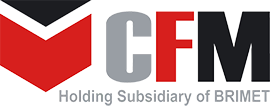Floating Wind Installation and Operations & Maintenance
26
-
02
-
2024
At last count, more than 120 floating wind foundation designs are in the market. Although there are many differences between them, for installation purposes, they can be categorized into three main types: semi-submersible, spar, and tension leg platform (TLP), which share common installation requirements. Recent demonstration models and small-scale FOW farms have used currently available subsea construction vessels as vessels of opportunity. Although competent vessels, their design and operational methodology do not provide the operational and logistical capabilities to support commercial-scale FOW developments.
The Enhydra Series
The need for new vessel designs and concepts for the floating offshore wind market has been emerging for some time. Based on these emerging market needs, trends, and timelines, GustoMSC launched the first design in the Enhydra series in early 2023.
The Modular Service and Operations Vessel (MSOV) concept provides all the capabilities of an SOV while adding modular capability to execute heavier maintenance jobs such as cable repair. It also increases the operating window by enhancing workability, specifically with a view on SOV operations for FOW.
The Role of Floating Wind Installation Vessel
Based on the same design principles as the MSOV, including modularity and versatility, the newest Enhydra design has been specifically developed to enable efficient commercial-scale deployment of FOW.
The Enhydra Floating Wind Installation Vessel (FWIV) is specially designed and equipped for mooring installation, hookup, and deployment of dynamic cables.
FOW installations are foreseen to be delivered in a campaign-driven methodology, with the majority following the below sequence:
- Pre-lay of mooring lines
- Hook-up and tensioning of mooring lines to the Floating Offshore Wind Turbine (FOWT)
- Dynamic cable installation and/or connection to the FOWT
These operations are similar to floating production unit installations but on a much larger scale. Commercial floating wind farms are expected to need 50 or more turbine installations.
Key Features of the Enhydra FWIV
The Enhydra FWIV’s key design features enable the commercial-scale development of floating offshore wind farms.
Vessel design:
The Enhydra FWIV design combines input and requirements from developers, vessel owners, and industry experts, leveraging GustoMSC’s extensive design expertise and experience in the offshore wind industry. The vessel can accommodate multiple sets of mooring systems including chain/fiber rope needed for the deep and ultra-deepwater FOW developments. Hybrid battery and regenerative power systems and being methanol-fueled make this vessel future-proof.
Versatility:
The Enhydra FWIV is a versatile concept and can accommodate a full range of mooring systems in various water depths. This flexibility is crucial as FOW expands into new regions where the environment and foundation designs will vary greatly. The Enhydra FWIV combines mooring and dynamic cable installation and hookup capabilities. This modular capability greatly enhances the Enhydra FWIV’s role as a key asset for FOW developments.
Future Prospects
The use of FOWTs is poised to further expand the offshore wind industry. As technology continues to advance, we can expect even more demand for efficient and innovative installation vessels like the Enhydra FWIV.
The deployment of these vessel designs will enable the industry to unlock the offshore wind energy potential, reduce carbon emissions, and contribute to the global transition toward clean energy.
Previous Page
Next Page
Previous Page
Next Page
Share:
Related News






